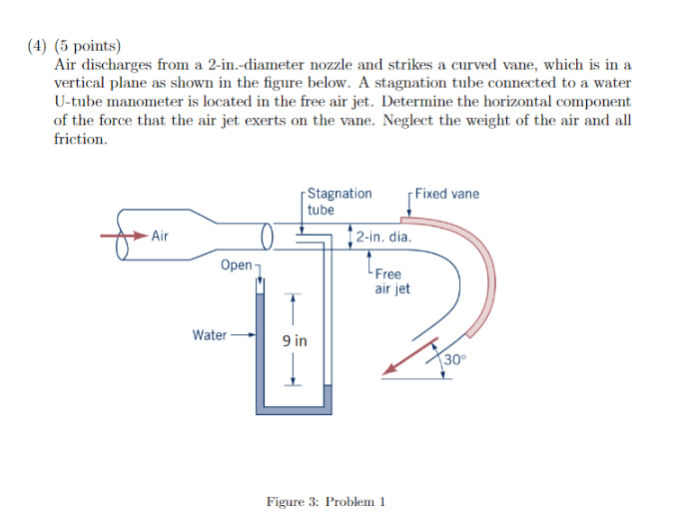As air discharges from a 2 in diameter nozzle, it embarks on a journey through the realm of fluid dynamics, revealing intricate flow patterns and design intricacies. This discourse delves into the fascinating world of nozzle discharges, examining the impact of nozzle diameter on discharge characteristics and unraveling the interplay between flow regimes, design parameters, and performance.
Nozzles, acting as conduits for fluid flow, play a pivotal role in diverse applications, from propulsion systems to industrial processes. Understanding the behavior of air discharges from nozzles is crucial for optimizing their performance and ensuring efficient operation. This comprehensive exploration aims to shed light on the fundamental principles governing air discharges from nozzles, empowering engineers and researchers with the knowledge to harness their potential.
1. Introduction

Air discharges from nozzles are a fundamental aspect of fluid dynamics and have wide-ranging applications in various industries. The diameter of the nozzle plays a critical role in determining the characteristics of the air discharge, including flow rate, velocity, and pressure.
Nozzle design involves optimizing these parameters to achieve specific performance objectives. This article provides a comprehensive overview of air discharges from nozzles, covering flow characteristics, nozzle design considerations, discharge velocity and pressure, applications, experimental techniques, computational modeling, and future research directions.
2. Flow Characteristics
Air discharges from nozzles can exhibit different flow regimes, depending on the nozzle geometry and operating conditions. These regimes include:
- Laminar flow: Characterized by smooth, orderly flow with no turbulence.
- Turbulent flow: Characterized by chaotic, irregular flow with eddies and fluctuations.
- Transitional flow: A combination of laminar and turbulent flow, with both orderly and chaotic regions.
The transition between flow regimes is influenced by factors such as Reynolds number, nozzle diameter, and flow velocity.
Applications, Air discharges from a 2 in diameter nozzle
Air discharges from nozzles find applications in a wide range of industries, including:
- Aerospace: For propulsion, cooling, and control systems.
- Automotive: For fuel injection, engine cooling, and exhaust systems.
- Manufacturing: For spray coating, cleaning, and drying processes.
- Energy: For combustion systems, fluidized beds, and wind turbines.
- Environmental: For pollution control, dust collection, and air conditioning systems.
The specific requirements and considerations for each application vary depending on the desired flow characteristics, pressure, and other performance parameters.
5. Nozzle Design Considerations
Nozzle design involves optimizing several key parameters to achieve specific performance objectives. These parameters include:
- Nozzle diameter: Determines the flow rate, velocity, and pressure of the air discharge.
- Nozzle shape: Influences the flow pattern and distribution.
- Nozzle material: Affects the durability, corrosion resistance, and heat transfer characteristics.
- Nozzle surface finish: Impacts the flow behavior and pressure drop.
The trade-offs between these parameters must be carefully considered to select the optimal nozzle design for specific applications.
6. Experimental Techniques

Experimental techniques are used to measure air discharge characteristics from nozzles. These techniques include:
- Pitot tubes: Measure flow velocity and pressure.
- Laser Doppler velocimetry (LDV): Non-intrusive technique for measuring flow velocity.
- Particle image velocimetry (PIV): Visualizes flow patterns and measures velocity.
- Computational fluid dynamics (CFD): Simulates flow behavior using numerical methods.
The selection of the appropriate measurement technique depends on the specific application and the desired accuracy and level of detail.
7. Computational Modeling

Computational modeling is a powerful tool for simulating air discharges from nozzles. Different modeling approaches include:
- Reynolds-averaged Navier-Stokes (RANS) models: Solve time-averaged Navier-Stokes equations.
- Large eddy simulation (LES) models: Solve filtered Navier-Stokes equations.
- Direct numerical simulation (DNS) models: Solve full Navier-Stokes equations.
Computational modeling can be used to optimize nozzle design, predict performance, and gain insights into complex flow phenomena.
FAQ Section: Air Discharges From A 2 In Diameter Nozzle
What are the key factors influencing the transition between flow regimes in air discharges from nozzles?
The transition between flow regimes is primarily governed by the Reynolds number, which represents the ratio of inertial forces to viscous forces. Other factors include nozzle geometry, fluid properties, and external disturbances.
How does nozzle diameter impact discharge velocity and pressure?
Nozzle diameter has a direct influence on discharge velocity and pressure. Smaller nozzles produce higher velocities and pressures due to increased flow constriction, while larger nozzles result in lower velocities and pressures.
What are some common applications of nozzles in different industries?
Nozzles find applications in various industries, including aerospace (propulsion systems), automotive (fuel injection), manufacturing (spray painting), and healthcare (medical nebulizers).